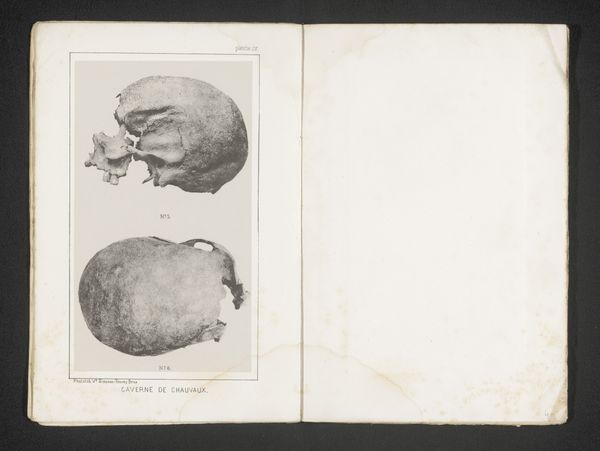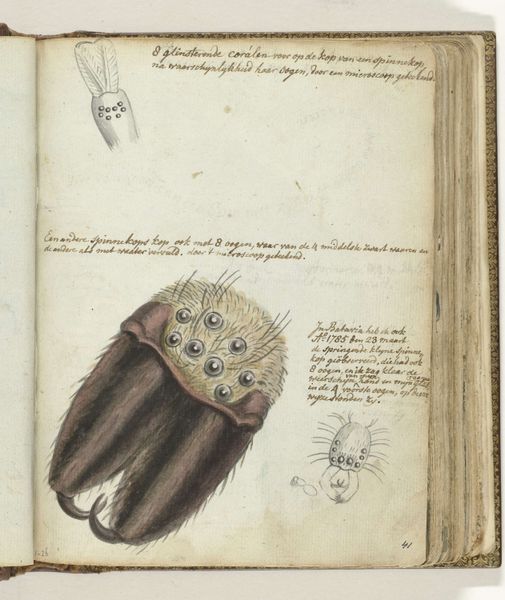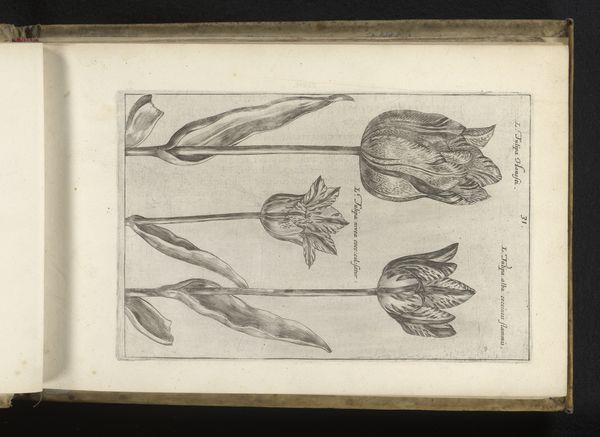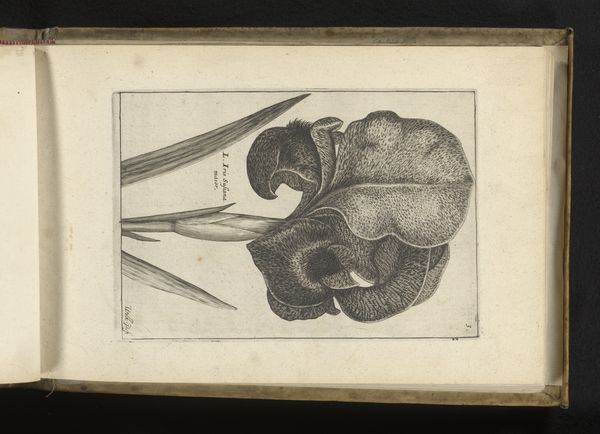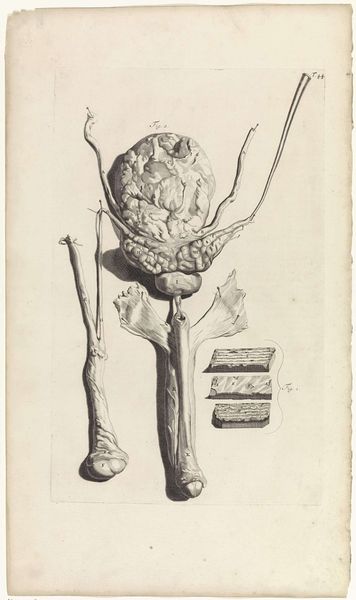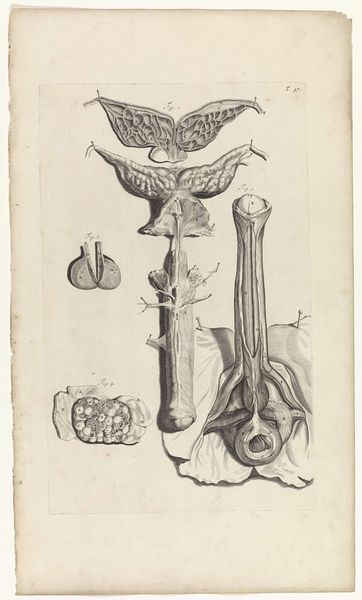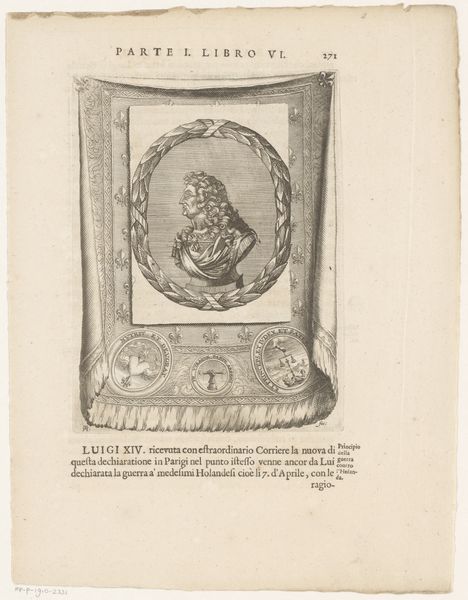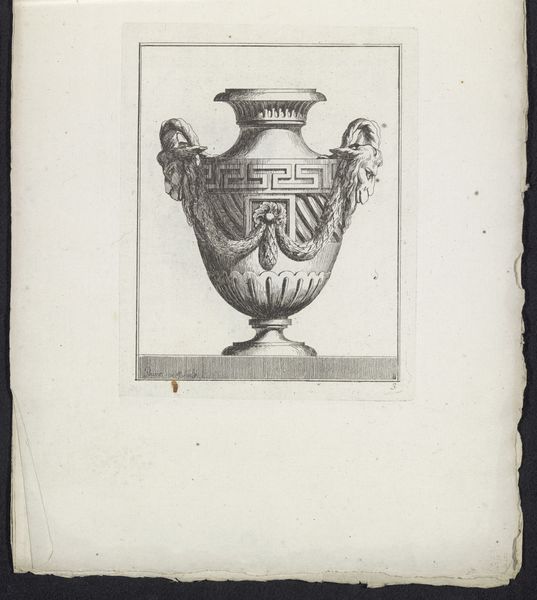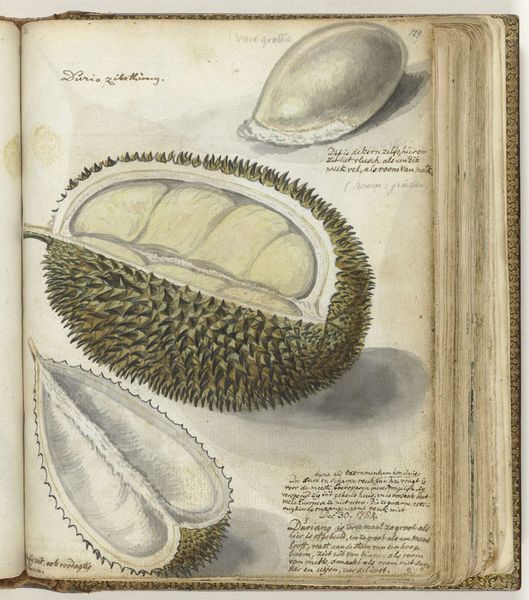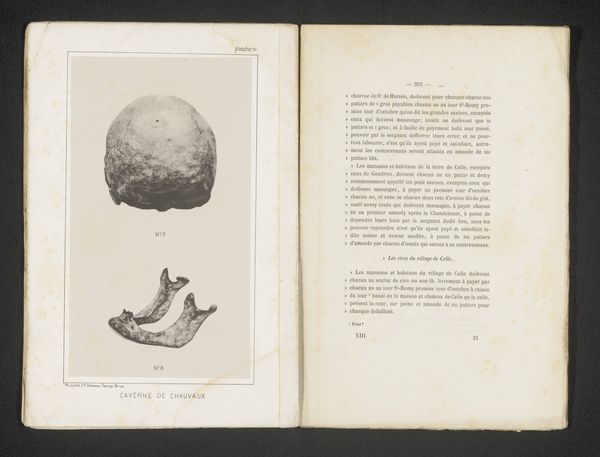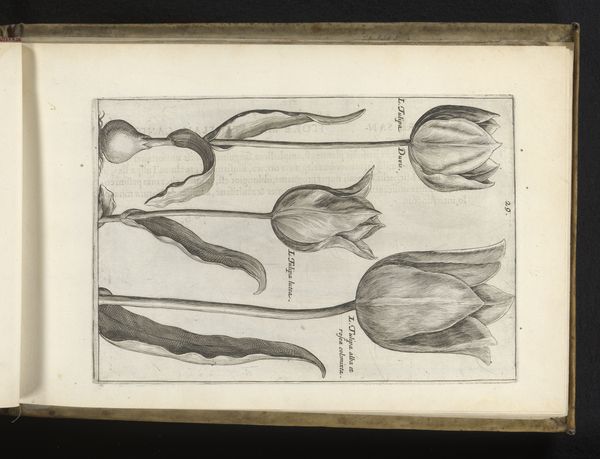
drawing, paper, watercolor
#
drawing
#
dutch-golden-age
#
paper
#
watercolor
#
coloured pencil
#
folk-art
#
watercolor
Dimensions: height 195 mm, width 155 mm
Copyright: Rijks Museum: Open Domain
Editor: Here we have "Javaanse paddestoel," a watercolor and drawing on paper, possibly from 1785, by Jan Brandes. It feels almost clinical, this stark, singular depiction of a mushroom. The form itself is quite unusual, almost bell-shaped. What jumps out to you? Curator: Indeed. Let us examine the composition first. Notice the stark, almost brutal simplicity of the form, isolated on the page. The artist provides very little contextual information. The emphasis is thus directed to the materiality of the fungus. Consider the way the artist renders its texture using watercolor: how would you characterize that technique? Editor: I see what you mean. It's almost sculptural, the way the light and shadow define its volume. It makes me want to reach out and touch it. The veining is highlighted by a dark, contrasting colour giving it dimension and emphasis. Curator: Precisely. There is an engagement with volume. This technique, what does it communicate about the object’s relationship to the viewer? What kind of experience did the artist want to offer by so accurately drawing what he saw? Editor: I guess he wanted us to really *see* the mushroom, not just glance at it. It feels almost scientific in its precision. Also the use of drawing with watercolour really emphasises the detail, it makes the image stand out despite the fact that the image is in neutral tones. Curator: And is the colour palette essential to understanding its natural context? I would argue it focuses us on pure form and texture rather than relying on expected coloration. It detaches us from presuppositions and compels observation. Editor: I see your point! By stripping away the color, Brandes is pushing us to appreciate the intrinsic qualities of the mushroom itself. Thank you for broadening my perspective! Curator: The pleasure was all mine. Art is a journey of discovery, always leading us back to fundamental forms.
Comments
No comments
Be the first to comment and join the conversation on the ultimate creative platform.
